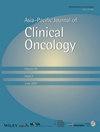Pneumocystis jirovecii Pneumonia in Cancer Patients, a Lethal Yet Fully Preventable Disease: Insights From a Tertiary Cancer Center in East India
Abstract
Background
Pneumocystis jirovecii pneumonia (PCP) is an unrecognized infection in non-HIV patients, particularly those with solid and hematologic malignancies. These patients experience higher mortality rates. This study aims to describe the incidence, initial characteristics, management, and outcomes of PCP at a tertiary cancer care center.
Methods
This retrospective observational study included all patients who underwent P. jirovecii PCR testing at our center from January 2019 to January 2022. PCP was diagnosed in PCR-positive patients. Data on demographics, treatment, and outcomes were extracted from medical records. The primary outcomes were ICU admission and 21-day mortality. Statistical analysis compared PCR-positive and PCR-negative patients, with a specific focus on lung cancer patients, and analyzed determinants of 21-day mortality in PCP patients.
Results
Of the 345 patients suspected of PCP, 54 (15.7%) were diagnosed with PCP. PCP patients were generally older. None of the PCP patients were on prophylaxis, compared to 14.8% of PCR-negative patients. In lung cancer patients, age and radiotherapy within the past year were significantly associated with a PCP diagnosis. The 21-day mortality rate among PCP patients was 35.4%. Independent risk factors for mortality included age and hematologic malignancy, while recent chemotherapy and higher neutrophil counts were associated with lower mortality.
Conclusion
PCP is associated with the highest mortality in patients with hematologic malignancies and lung cancer. The findings underscore the importance and efficacy of prophylaxis in at-risk groups and should raise awareness for the diagnosis of PCP in overlooked populations, such as older cancer patients and those undergoing radiotherapy.


 求助内容:
求助内容: 应助结果提醒方式:
应助结果提醒方式:


